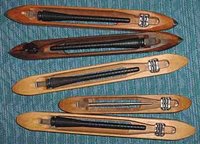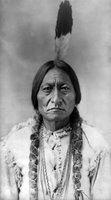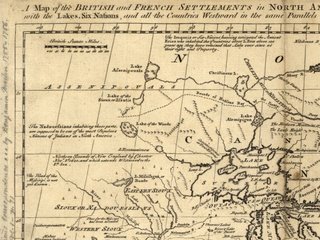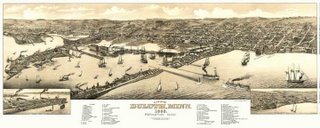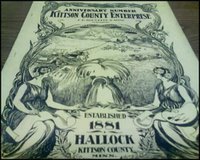I spent Friday morning at the
Institute for Regional Studies doing research, taking a vacation day to do so. Call me crazy, but I love research, especially concerning family history, and history about my town.
I came away with lots of new information which I'll be sharing in the upcoming weeks, but the most exciting pieces I came across, were items I didn't even know existed, and those I must say are the best to find!
The first one was an interview done in 1955 of my great uncle Richard Fitzpatrick, which was part of a series of interviews done of people who had once worked on large farms in my hometown area at the turn of the last century. The interviews are only identified as being done in 1955 by an L. Sackett. Included in my uncle's interview are fascinating tidbits about life on the big farms back then, and he also refers to my own grandfather, Albert Fitzpatrick, as very nice surprise! I also found out information about the Ahles and Finney families from this series of interviews, which I will share here later.
The best discovery of all, however, was of a packet of letters from members of the Gamble family. To give you a taste of the kind of information contained in these letters, I share the example below - please note that I copy it as it was transcribed, with little to no punctuation - from examples of handwriting my own grandmother left me, this was not an uncommon way for people to write letters years ago, especially those with little education...
St. Vincent
March the 28th
Dear Father & Mother we received your letter and we were glad to hear that you were well as this leaves us all well at present it has been very cold all winter but it is getting nice wether noe we wil soon have plowing wether there is not a day but there is a train full of people coming this week there was fifteen hundred there never was such emagration as there will be this sumer places that nobody wanted look at us taken up now around us is better settled than canada we were allways in hopes that you would have come up this spring the place next to us was vacent but it is gone now nobody around us knew about it we could have got it for yous but we could not pay it ourselves we want to not advise any of you to come for fear of getting blamed some might like it and others mightent but there is one thing none of us would go back to any part of canada if we got two thousand dollers left in our hand we would not take it we think of starting a dairy we could sell all the milk we could take to the town at ten cents a quart yous that is so good at raising vegetables you could make a fortune heare nobody but the half-breeds raise any to sell the farmers all goe in for the wheat the man next to us Mr. Trail will have a whole section six hundred ackres in wheat this summer he intends breaking up a good bit [word illegible] Aleck has charg of the coal house where the engens get there coal he gets thirty five dollars a month it is about ten minutes walk from our house you know our lot joins the lot where the town is built and the railroad company buildings is oppiset our house there bees fire engines in the round house at once every one of the children can tell the name of the engine as far as they can see them it is espected that St. Vincent is going to be boss city of the North west it is telling emerson there is a elevator that holds sicty thousand bushels of wheat the children all goes to school Alick is one of the trustees and they hired a canadian master to teach we have called teh baby Samuel Moses he looks just like Willie a big fat boy We offerred seventy dollers for two cows last week we have to they will salve in May supposing yous want to come and take up land and make improvements you cant make money that way There is plenty making a good living that way lizy is to be at home and she write to maggie herself write soon our house cost us three hundred dollars lumber is very dear here Charlie sold out for three hundred dollers and he is drunk every day he bought a yolk of oxen and they later died he is a [word illegible] we can go out and shoot a dosen of prairy chicans any da for our dinner and they are fat the children would all like yours to be here Alice said she would granie her hen and Willie would draw her wash with the oxen no more at present
Mary Ann Gamble
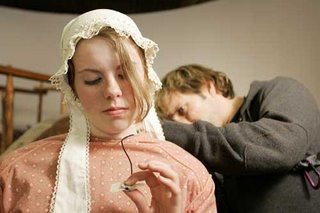


![School Play performed in Reid Hall [St. Vincent, MN - Early 1900s]](https://blogger.googleusercontent.com/img/b/R29vZ2xl/AVvXsEit-R3wSJiFHoHjfAligngtgmPovT8ZT1Bn0FYU3TyIv7Ssfp5ofYb4EV1uYh_0wgHrcKzcyu6f28IAiUTUfh4iThqTAi8imfy-6u4rn9VDqfrBHYZpK_dEdGcD5XB806-11Zx_/s640/PlayCastGambles+-+Edited.jpg)
